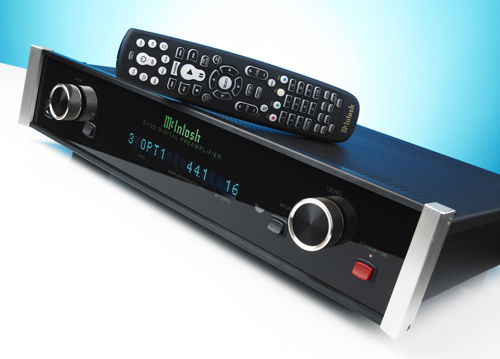What Hi-Fi? Verdict
This entry-level McIntosh is a solid and entertaining performer that offers plenty of functionality
Pros
- +
Refined and entertaining sound
- +
Agile and detailed presentation
- +
Wide sound stage
- +
Fine headphone performance
- +
Nice to use
Cons
- -
Lacks a little rhythmic punch
- -
Up against some tough competition
Why you can trust What Hi-Fi?
The McIntosh D100 is different. When we think of McIntosh, we think of massive blue-tinted power meters fronting appropriately oversized amplifiers that usually sell for car money. Founded back in 1949, this is an American brand with a long, distinguished history and no shortage of great products.
McIntosh D100 review: design
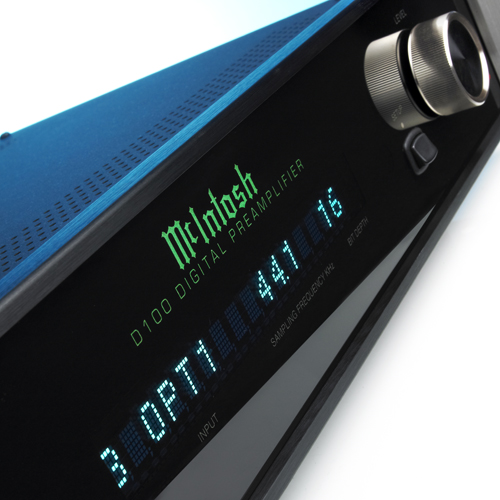
Despite a clear liking for retro, and the use of valve technology for at least some of its bewildering range of amplification, this is one traditional hi-fi brand that’s not afraid to look to the future. That’s where the McIntosh D100 digital stereo preamplifier comes in.
MORE: McIntosh MT5 turntable comes to UK
By McIntosh standards the D100 is very much an entry-level product, but that doesn’t mean it’s a stripped-back unit. Build quality is solid; robust-feeling controls and the company’s usual black-glass front panel complement the nicely finished casework.
The overall look is firmly traditional and very much in the McIntosh mould, just like the company’s loyal fan base would have it.
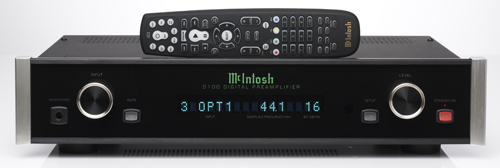
There’s a characteristically blue display to show the bit depth and sampling rate of the signal received, as well as the volume level. A welcome addition is the 6.3mm headphone output on the panel. Unusually, the D100’s output isn’t muted when a pair of ‘phones is plugged in; it has to be muted separately if you don’t want to get any sound out of the main speakers.
It’s clear the company’s engineers have put some thought into the headphone amplifier’s performance, as it sounds consistent with the main line-level outputs. We tried the Grado SR325i cans and the AKG K551s to good effect. Usually headphone circuits, even on high-end products (if they’re included at all), are an afterthought – and they sound it, often lacking transparency and dynamics.
The latest hi-fi, home cinema and tech news, reviews, buying advice and deals, direct to your inbox.

Move round the back and the McIntosh D100 is well equipped. There’s the usual complement of digital inputs including USB, coaxial and optical, together with fixed and variable line-level outputs in single-ended and balanced XLR varieties.
The choice of these outputs means that the D100 can be used as a conventional outboard DAC plugged into the system amplifier or, as makes most sense, as a digital preamp.
Remove the lid and you’ll find a spacious arrangement with separate boards for the power supply, number crunching circuitry and analogue output stage. Take a look on the output stage board and you’ll see a dedicated headphone-amp circuit, which, in part at least, accounts for the fine performance of this output. It’s not unusual to see the headphone feed taken off the main outputs with the minimum of finessing.
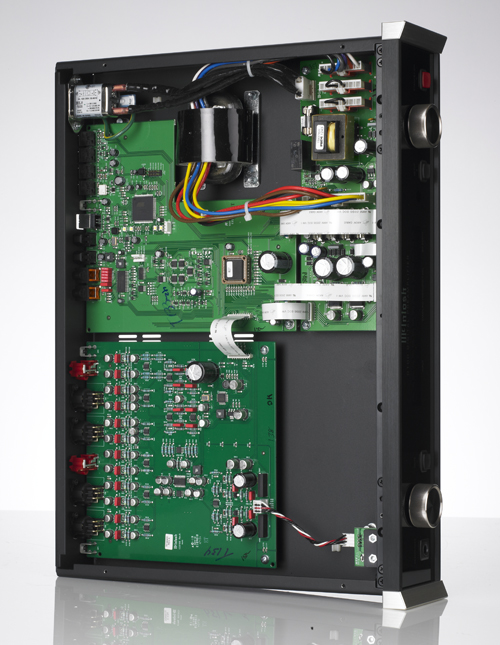
McIntosh D100 review: performance
We used the D100 both as a stand-alone DAC and a full-blown digital preamp. Sources included our Naim NDS streamer and Apple MacBook, streaming a range of music files right up to 24-bit/192kHz material. We tried the DAC through all its inputs, and felt any preferences were as much down to the sources as they were to the D100.
Regardless of source the D100 has an appealing balance of agility and refinement. Play a 24-bit/192kHz version of REM’s Automatic for the People and the McIntosh delivers a dynamic sound packed with detail.
The presentation is nicely layered, with each instrumental strand having enough space to breathe while still gelling with the whole. There’s a slight sweetening of the sound, enough to knock off some of the recording’s deliberately rough edges, but not so much to temper the excitement or drive.

Move on to a CD rip of Orff’s Carmina Burana and the D100 shows a pleasingly expansive soundstage: it’s surprisingly wide and precisely populated, though lacking that final degree of depth. Still, it’s impressive, as is the preamp’s tonal balance, which is even-handed enough not to draw undue attention.
The Dead Weather’s 60 Feet Tall is a stern test of timing, speed and attack, and the McIntosh does well. It’s not the most rhythmically precise performer, and doesn’t quite lock into the interplay between instruments as well as the Naim DAC or Chord’s talented Qute HD do, but overall it does well enough to preserve the energy and drama in the music.
With our reference Bryston electronics, we preferred the McIntosh via its fixed-level outputs. There’s a slight loss of transparency caused by the more complex signal path that plumbing in the Bryston BP26 preamp brings, but the sound has a weight that the D100 plugged directly into the power amp doesn’t have.
We think the outcome of this comparison is likely to be system dependent. Plus there’s the better value represented by having the McIntosh perform both DAC and preamp duties to consider.
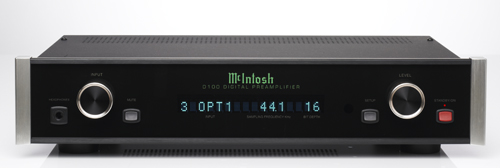
McIntosh D100 review: verdict
The McIntosh D100 is a fine product. It’s well equipped, nicely made and is one of the more affordable ways into McIntosh ownership. Sonically, it’s good for the money rather than great, but there’s still enough talent here to deliver engaging, informative results.
See all our amplifier Best Buys
Follow whathifi.com on Twitter
What Hi-Fi?, founded in 1976, is the world's leading independent guide to buying and owning hi-fi and home entertainment products. Our comprehensive tests help you buy the very best for your money, with our advice sections giving you step-by-step information on how to get even more from your music and movies. Everything is tested by our dedicated team of in-house reviewers in our custom-built test rooms in London, Reading and Bath. Our coveted five-star rating and Awards are recognised all over the world as the ultimate seal of approval, so you can buy with absolute confidence.
